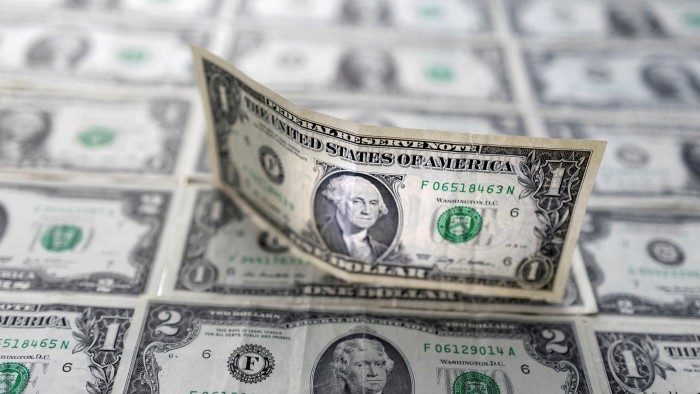Distressed debt levels double in US corporate bond market

Roula Khalaf, Editor of the FT, selects her favourite stories in this weekly newsletter.
Investors have started backing away from the riskiest corporate bonds in the US, with the amount of debt that trades at distressed levels doubling since the start of the year.
The value of junk bonds trading for 70 cents on the dollar or less, considered a sign of distress and a warning that a company may struggle to repay debts, has climbed to $27bn from about $14bn at the end of 2021, according to FT calculations based on a widely watched index run by Ice Data Services.
The increase reflects a more hawkish Federal Reserve, which first lifted interest rates in March and is expected to do so again on Wednesday, the beginning of a forecast string of rate rises meant to combat US inflation.
The central bank’s pivot also comes alongside the war in Ukraine and slowing global growth, clouding the picture for more indebted companies that may struggle to refinance their borrowings at higher interest rates.
Marty Fridson, chief investment officer of Lehmann Livian Fridson Advisors, said that while the amount of debt trading at distressed levels remained low, “it’s starting to move up, and I would expect it to continue to rise. That’s significant.”
Further monetary tightening by the Fed will push more debt into the distressed zone, he added.
The accumulation of distressed debt outstanding comes after the worst month for the US high-yield bond market since the coronavirus pandemic-triggered sell-off in March 2020, with an Ice Data Services index down 3.6 per cent in April.
Another measure of distress — the share of debt trading with a yield of 10 percentage points or more above equivalent US government bonds — has also risen, led by consumer and communications companies, according to data from UBS.
Retail technology company Diebold Nixdorf’s bonds maturing in 2024 slid sharply in April, pushing up its yield from about 10 per cent at the start of that month to 27 per cent on Tuesday.
The yield on pharmacy chain Rite Aid’s $850mn bond maturing in 2026 has been rising all year, reaching close to 13 per cent on Tuesday, up from about 7.3 per cent at the end of 2021.
Some investors remain sanguine about the risks ahead, noting that many lower-rated companies have taken the opportunity to raise cash, extending the maturity of their debt and making them less reliant on new money.
However, UBS analyst Matt Mish noted the number of companies that face elevated borrowing costs increases sharply for bonds trading above an all-in yield of 10 per cent. More than 8 per cent of the US high-yield bond market is now above this level.
“The weakness is broadening out,” he said. “It tells you that at the margin, this is not just a rates issue, it’s also a credit issue. There are not many companies that can finance at north of 10 per cent for a sustained period of time.”
Comments